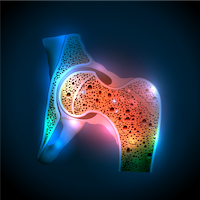June 29, 2018 – Osteoporosis is a serious public health concern and causes significant economic burden. Currently, about 54 million people in the United States have osteoporosis or low bone mass. It is projected that by 2025, the incidence of bone fracture will be 3 million, resulting in about $25 billion in medical costs each year. Among different ethnicities, Hispanics are estimated to have the most rapid increase in osteoporosis burden by 2025.
 Ruixue Hou is a current PhD candidate in Dr. Saroja Voruganti’s lab at the UNC Nutrition Research Institute. She studies the effects of genetic variants on bone health and how diet and physical activity could modify the relationship in Hispanic children.
Ruixue Hou is a current PhD candidate in Dr. Saroja Voruganti’s lab at the UNC Nutrition Research Institute. She studies the effects of genetic variants on bone health and how diet and physical activity could modify the relationship in Hispanic children.
At the 2018 national conference of the American Society for Nutrition, held in Boston in May, Hou was a second-place winner in the Emerging Leader Poster Competition in the area of biomarkers. Her project on the genetic determinants of bone mineral density and content in Hispanic children was one of 114 ELPC finalists selected from more than 2000 submitted abstracts.
Hou explained that genetic factors play an important role in bone mass. Her research in the Voruganti Lab aims to identify the genetic factors affecting bone mineral content (BMC) and bone mineral density (BMD) in Hispanic children. Using data from the Viva La Familia Study, a study consisting of 1030 Hispanic children (age 4-19 years old) enrolled from 319 families in Houston, TX, the lab conducted genetic analysis to identify the chromosomal regions that may be influencing BMC or BMD. They found strong evidence that regions on chromosomes 7, 10, 14 and 20 may affect bone mass or bone density. For example, they found that BMC of left rib, BMD of left leg, pelvis, right leg and total body may be strongly affected by a 61cM region on chromosome 7. Their next step was to locate genes in the identified chromosomal regions that may affect BMC or BMD. They found evidence that genetic variants in AOAH (Acyloxyacyl Hydrolase), NEURL1 (Neuralized E3 Ubiquitin Protein Ligase 1) and PRKCH (Protein Kinase C Eta) genes may affect BMC or BMD. Hou and the lab are conducting further studies to confirm and validate these results.
Identifying genetic variants could allow identification of groups at high risk for future fracture. This is of particular relevance as safe interventions exist for osteoporosis, and such preventive therapy years before disease onset could decrease the population health burden of this disease. Also, identification of genetic variants associated with bone health in Hispanics may highlight ethnic-specific pathways that are crucial to osteoporosis pathophysiology, which could provide useful information to predict and prevent osteoporosis.
“Our current understanding of the genetic basis of pediatric bone health is very limited. Ruixue’s work will provide more insight into bone health and will be useful in early prediction of future risk of osteoporosis,” said Dr. Voruganti.
Post: June 29, 2018

